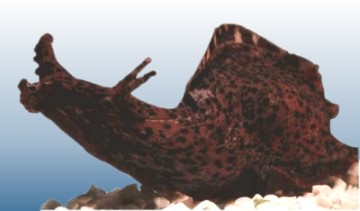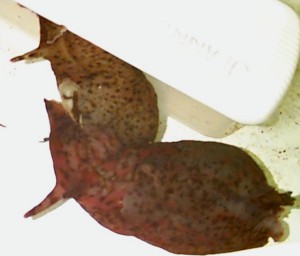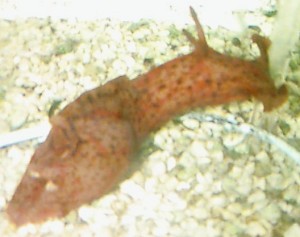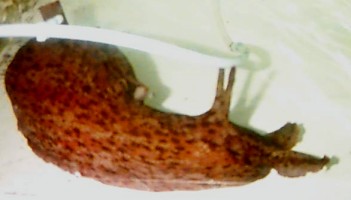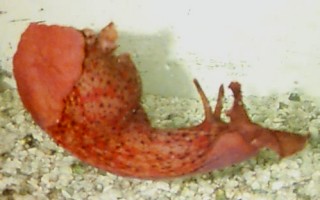|
Aplysia
californica
"This sea-slug [Aplysia] is about five inches long; and is of a dirty-yellowish colour, veined with purple.... It feeds on the delicate seaweeds.... This slug, when disturbed, emits a very fine purplish-red fluid, which stains the water for the space of a foot around." CHARLES DARWIN, Voyage of the Beagle "Most of the Aplysia familiar to neurobiologists eat a different species of seaweed than the ones Darwin saw in St. Jago in 1832, and consequently have far more purple than yellowish color. You are what you eat." WILLIAM CALVIN, The Throwing Madonna Aplysia (genus Opisthobranchia) are hermaphrodites, meaning that both partners fertilize each others each with their sperm during mating.
This gastropod mollusc is suited for Neurobiology mainly because of its large neurons - they are among the largest in the animal kingdom. In addition, its entire nervous system contains only a few hundred neurons, making it less complex and, hopefully, easier to understand than that of higher animals.
Despite its simplicity, it exhibits a variety of behaviors and the capability to learn both non-associatively (sensitisation, habituation) and associatively (classical, operant conditioning).
It was Aplysia that enabled researchers to study the molecular events in the cell during learning. In conjunction with the geneticly more powerful fly and mouse model systems, Aplysia research has boosted our understanding of the biological basis of learning and memory.
|
